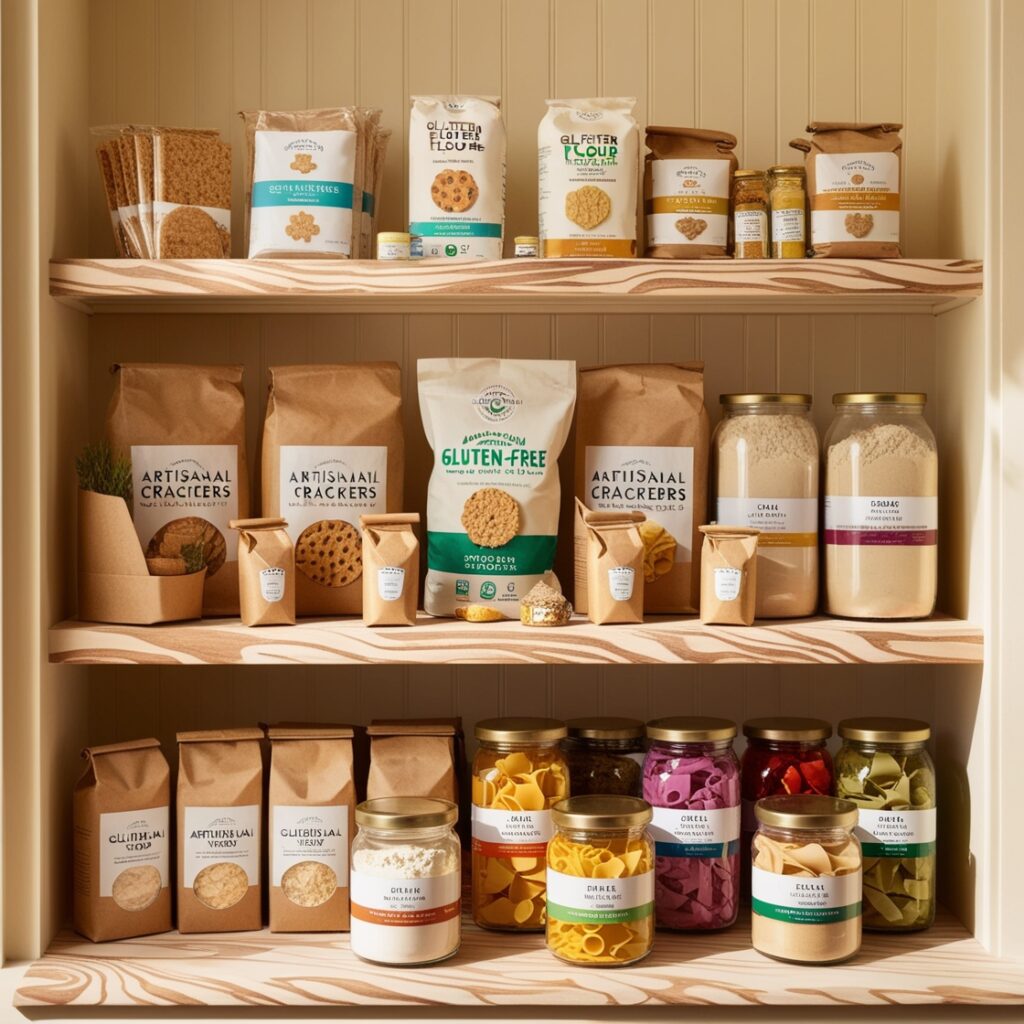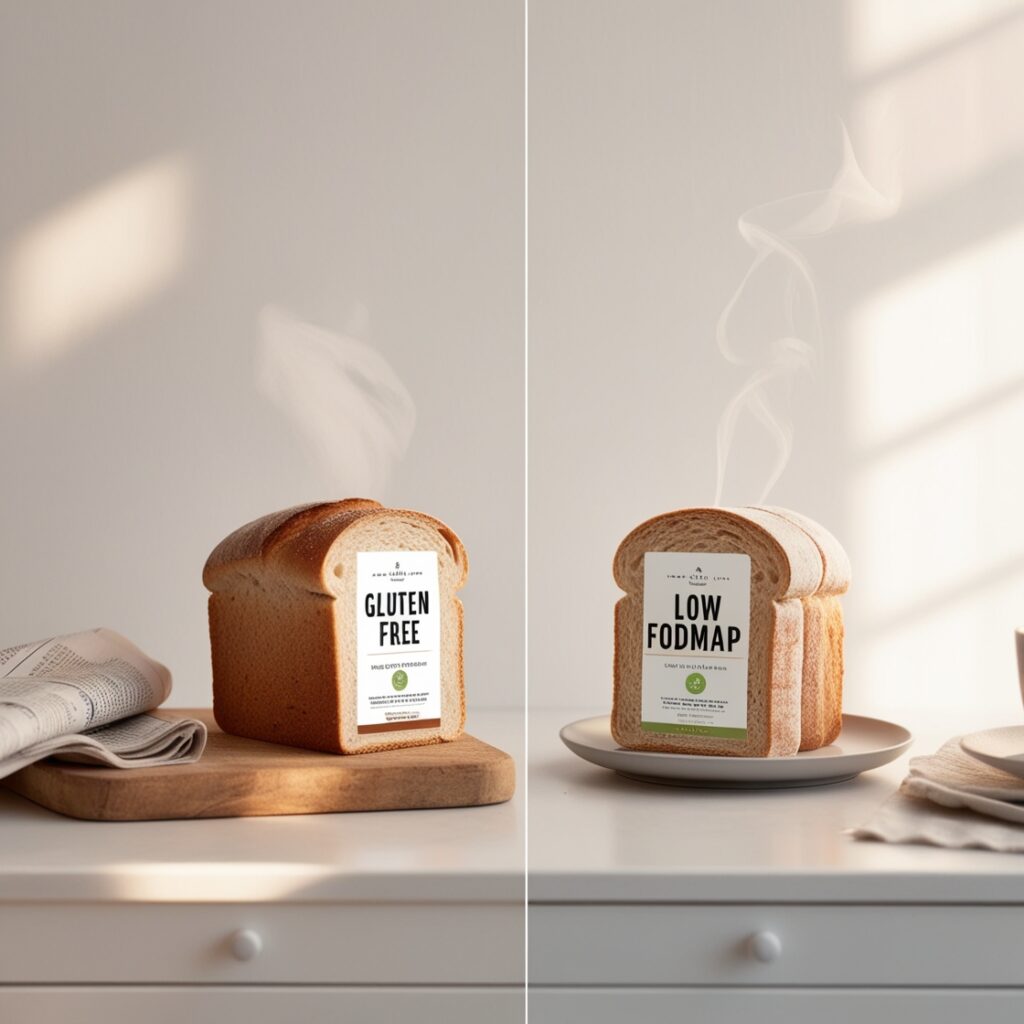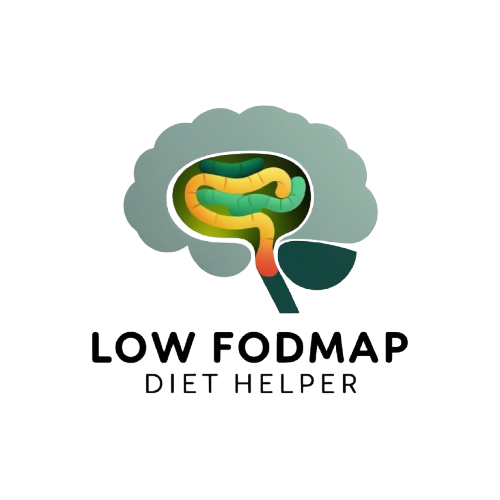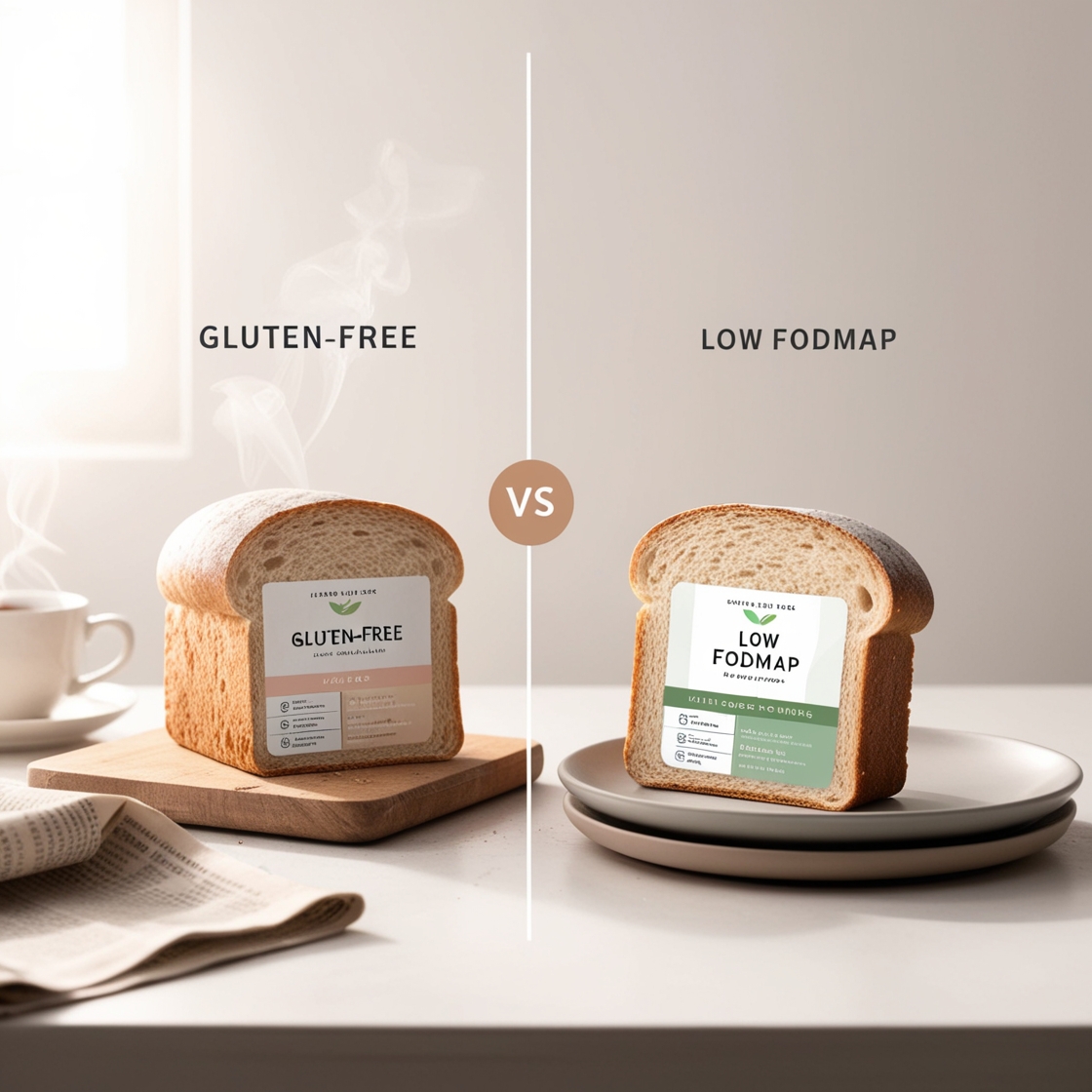With gut health in the spotlight, diet labels like gluten-free and low FODMAP can get confusing. A common question: are they the same thing?
If you’re navigating digestive discomfort, the answer matters—and it can make a real difference in how your gut feels after meals.
Let’s break it down in plain language so you can make smart food choices with confidence.
First Things First: What Is Gluten?
Gluten is a protein found in wheat, barley, and rye. For most people, gluten is harmless. But for some, it can be a big problem:
- People with celiac disease have an immune reaction to gluten that damages the lining of their small intestine.
- People with non-celiac gluten sensitivity can also feel bloated, tired, or foggy after eating gluten—but without the same immune damage.
So, the gluten-free diet removes all foods that contain gluten. This includes most breads, pastas, pastries, and even some sauces and seasonings.

What Is the Low FODMAP Diet?
Now enter FODMAPs: short-chain carbs that are poorly absorbed in the gut.
They stand for:
- Fermentable
- Oligosaccharides
- Disaccharides
- Monosaccharides
- And Polyols
FODMAPs can cause bloating, gas, diarrhea, and other IBS symptoms because they ferment in the gut and draw water into the intestines.
So, the Low FODMAP diet removes high-FODMAP foods like:
- Onion and garlic
- Wheat (in large amounts)
- Milk, apples, beans, and more
The key difference? The Low FODMAP diet is not about gluten, it’s about carbs that ferment in the gut.
So… Are They the Same?
Nope. Not the same thing.
Here’s a simple breakdown:
| Gluten-Free | Low FODMAP | |
|---|---|---|
| Focus | Removes gluten (a protein) | Removes certain fermentable carbs |
| Good for | Celiac disease, gluten sensitivity | IBS, bloating, gut discomfort |
| Wheat allowed? | No | Only in small amounts |
| Dairy allowed? | Yes | Some types only (lactose-free) |
| Onion/Garlic allowed? | Yes | No (they’re high FODMAP) |
Why People Get Confused
Some foods overlap! For example:
- Wheat contains both gluten (a protein) and fructans (a FODMAP carb).
- When you avoid wheat on a Low FODMAP diet, you’re doing it because of the fructans, not the gluten.
- So gluten-free bread might also be low FODMAP—but not always!

This overlap creates confusion, especially when people feel better after switching to gluten-free. It might not be the gluten—they might just be eating fewer FODMAPs without knowing it!
Can a Low FODMAP Diet Include Gluten?
Surprisingly, yes, in small amounts.
The Low FODMAP diet isn’t strictly gluten-free. For example:
- Sourdough spelt bread (made traditionally) can be low in FODMAPs, even though it contains gluten.
- Soy sauce is often fine too—it has tiny amounts of wheat but is still low FODMAP in small servings.
So, if you’re not sensitive to gluten itself, there’s no need to go totally gluten-free on a Low FODMAP diet. The goal is to manage fermentable carbs, not gluten.
How a Low FODMAP Calculator Can Help
Trying to figure out what’s safe to eat? You’re not alone—it’s confusing at first!
That’s why using a Low FODMAP diet calculator is a smart move. It helps you:
✅ Check whether a food is high or low FODMAP
✅ See if your favorite gluten-free snack is also low FODMAP
✅ Find suitable recipes without second-guessing every ingredient

No more endless searching or food label anxiety—just tap and go.
Final Thoughts
Gluten-free and Low FODMAP are not the same, but they sometimes cross paths.
- If you have celiac disease, you must follow a strict gluten-free diet.
- If you have IBS, the Low FODMAP diet may be your best bet.
- If you’re sensitive to both? You can combine both approaches—but do so with a dietitian’s help.
Whatever path you’re on, remember that your gut is unique—and the more you learn, the better you can support it.
And if you need help figuring things out along the way, let tools like the Low FODMAP calculator be your sidekick.
🎯 Want to check if your favorite food is Low FODMAP?
Try our free Low FODMAP Food Calculator now and take control of your gut health—one meal at a time.


Leave a Reply